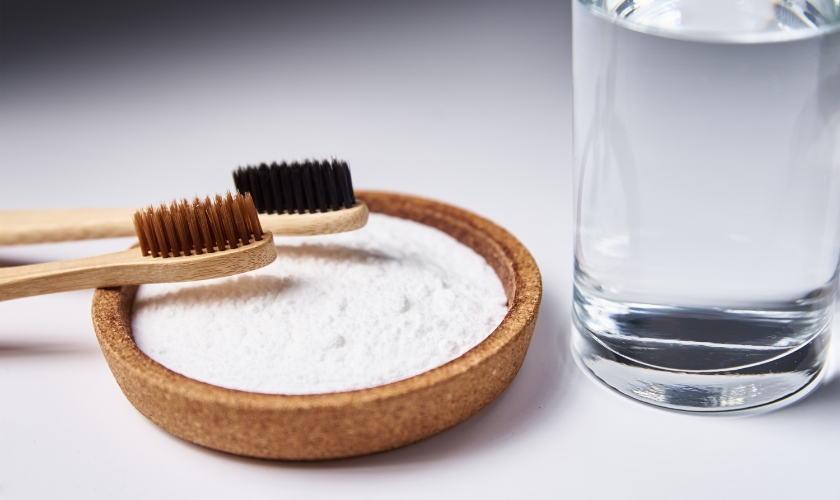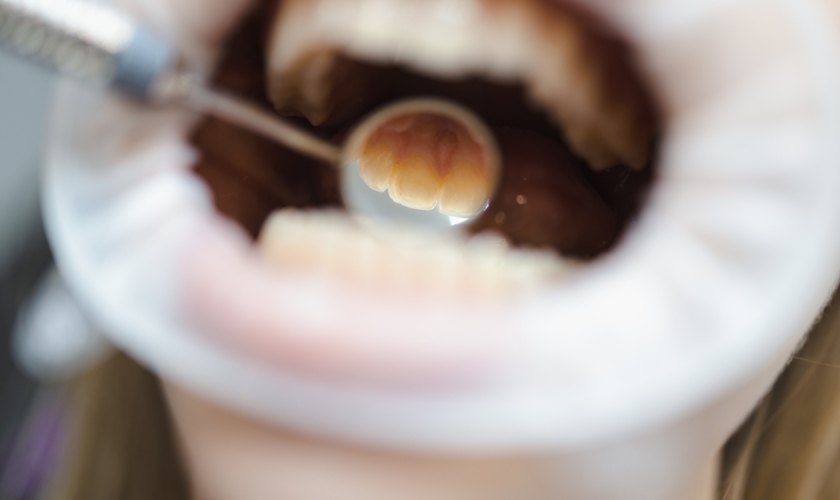
Salt Brushing is a practice that dates back centuries. Let’s delve into the historical context of salt’s use in oral hygiene and explore its properties relevant to modern dental care.
Historical Context of Salt Brushing
- Ancient Civilizations: Evidence suggests that ancient Egyptians, Romans, and Greeks used salt for cleaning teeth. Salt’s natural properties made it a valuable tool for maintaining oral health in a time when commercial toothpaste wasn’t available.
- Folklore and Traditional Practices Around the World: In many cultures around the world, salt is considered a natural purifier. Traditional practices in various regions incorporate salt into oral hygiene routines, often mixed with herbs or other cleansing agents.
Properties of Salt Relevant to Oral Care
Salt possesses two key properties that make it relevant to oral care:
- Antibacterial Properties: Salt has natural disinfectant qualities that can help reduce bacteria in the mouth. This can be beneficial for maintaining gum health and preventing bad breath.
- Mild Abrasive Nature: Salt’s granular texture can act as a mild abrasive, potentially aiding in the removal of surface stains and plaque buildup.
The Science Behind Salt Brushing
The effectiveness of salt for brushing teeth requires a closer look. Let’s weigh the scientific evidence regarding plaque removal, teeth whitening, and potential risks associated with salt brushing.
A. Effectiveness of Salt for Brushing
- Studies on Plaque Removal and Teeth Whitening: While some studies suggest that salt may help with plaque removal and minor teeth staining, the results are not conclusive. Salt’s abrasive nature might be insufficient for thorough cleaning compared to fluoride toothpaste.
- Comparison with Fluoride Toothpaste: Fluoride toothpaste remains the gold standard for oral care. Extensive research supports its effectiveness in preventing cavities, strengthening tooth enamel, and reducing plaque buildup. Salt lacks these crucial benefits.
B. Potential Risks and Drawbacks
Using salt for brushing comes with potential drawbacks to consider:
- Abrasiveness and Damage to Tooth Enamel: Salt’s abrasive texture, especially if the grains are coarse, can erode tooth enamel over time. This can lead to increased tooth sensitivity and make teeth more prone to decay.
- Gum Irritation and Sensitivity: The abrasive nature of salt can irritate gum tissue, particularly for those with sensitive gums. Regular use might cause discomfort and inflammation.
- Lack of Essential Minerals for Oral Health: Fluoride toothpaste provides essential minerals like fluoride and calcium that strengthen teeth and prevent cavities. Salt lacks these components for comprehensive oral care.
While salt might offer some minor benefits, the potential risks and lack of essential minerals raise concerns. The next section will explore how to make salt brushing work, if recommended by a Newton dentist, and offer some safer alternatives.
Making Salt Brushing Work (if recommended)
It’s important to note that dentists generally recommend fluoride toothpaste for optimal oral care. However, if you’re interested in trying salt brushing under the guidance of your dentist, here’s how to potentially minimize risks:
A. Types of Salt Suitable for Brushing
- Sea Salt vs. Himalayan Salt vs. Table Salt: Opt for finer-grained sea salt or Himalayan salt over table salt. Their texture is gentler on teeth compared to the coarser crystals of table salt.
- Grain Size and Texture Recommendations: Choose finely ground salt to minimize abrasion. Avoid using large, coarse grains that can be harsh on enamel.
B. Creating a Salt Brushing Mix
There are two main approaches to creating a salt-brushing mix:
- Salt and Water Solution: Mix a half teaspoon of finely ground sea salt with a cup of warm water. Swish thoroughly and spit.
- Adding Other Ingredients (consult your dentist first): Some recommend adding baking soda for additional cleaning power or a few drops of essential oil for flavor (consult your dentist before using essential oils, as some can be harmful if swallowed).
Important Note: Always consult with your dentist in Newton before adding any additional ingredients like baking soda or essential oils to your salt brushing mix. They can advise on suitability and potential risks based on your individual oral health.
C. Proper Technique for Salt Brushing
- Brushing Frequency and Duration: If using salt as part of your routine, limit it to 1-2 times per week. Use a gentle brushing motion for a maximum of 2 minutes, focusing on all tooth surfaces.
- Following Up with Fluoride Toothpaste: After using a salt mix, brush your teeth thoroughly with fluoride toothpaste to ensure proper cleaning and receive the essential benefits of fluoride.
Remember, salt brushing should never be a complete replacement for a fluoride toothpaste regimen. It can potentially be a supplementary practice, but only with dentist guidance and proper technique.
Alternatives to Salt Brushing for Oral Care
Salt brushing might seem like a natural option, but there are safer and more effective methods for maintaining optimal oral health. Here are two key alternatives to consider:
A. Fluoride Toothpaste: The Gold Standard
Fluoride toothpaste remains the undisputed champion of oral care. Decades of research solidify its effectiveness in several crucial areas:
- Importance of Fluoride for Enamel Strengthening: Fluoride strengthens tooth enamel, making teeth more resistant to cavities and decay. Salt lacks this vital benefit.
- Choosing the Right Fluoride Toothpaste: Look for toothpaste with the American Dental Association (ADA) seal of approval. This ensures it contains the recommended amount of fluoride for optimal protection.
There’s a wide variety of fluoride toothpaste available, some formulated for specific needs like sensitivity or whitening. Consult your Newton dentist for personalized recommendations.
B. Electric Toothbrushes for Enhanced Cleaning
Electric toothbrushes offer several advantages over manual brushing:
- Benefits of Electric Toothbrushes: Studies show electric toothbrushes remove more plaque and bacteria compared to manual brushing. They can also be gentler on gums, especially for those with dexterity limitations.
- Choosing an Electric Toothbrush: Consider features like oscillating or sonic technology, pressure sensors, and timer functions. Your dentist can help you choose the right electric toothbrush for your needs.
By incorporating high-quality fluoride toothpaste and an electric toothbrush into your routine, you can achieve a superior level of cleanliness and promote long-term oral health.
Brushing with Salt: A Final Word
Brushing with salt has a long history, but scientific evidence points towards fluoride toothpaste as the superior choice for optimal oral care. Salt might offer some minor benefits in a supplementary role, but only with dentist guidance and proper technique. Focus on a fluoride toothpaste regimen and consider incorporating an electric toothbrush for a more thorough clean. Remember, consulting your nearest dentist regularly is crucial for maintaining a healthy smile.
Frequently Asked Questions
No, salt brushing is not recommended for everyday use. The potential for enamel erosion and gum irritation outweighs the limited benefits. Stick to a fluoride toothpaste regimen for daily brushing.
Salt might help remove some surface stains, but its whitening effect is minimal. For effective whitening, consider professional treatments or dentist-recommended whitening toothpastes.
Signs of enamel damage can include increased tooth sensitivity, especially to cold or hot beverages. You might also notice slight cracks or yellowing on the tooth surface. Consult your dentist if you experience any of these symptoms.


